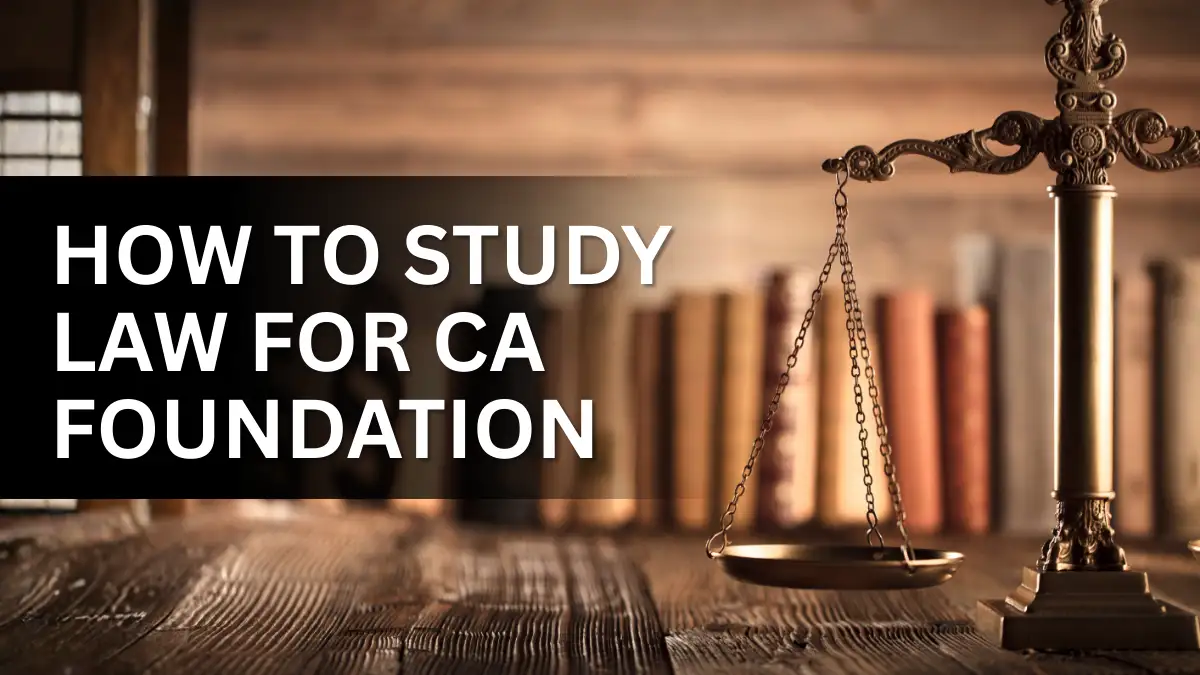The CMA Course is divided into three levels i.e. CMA Foundation, CMA Intermediate and Final. The new CMA syllabus for the foundation includes many concepts related to finance and Management. Whereas the syllabus for Intermediate and Final is divided into two groups, which include advanced level topics related to cost, accounting, finance, law and etc.
Before moving forward let’s have a look at the overview of the CMA Course.
CMA Course – An Overview
| Course Highlights | |
| Course Name | CMA India |
| Regulating Body | The Institute of Cost Accountants of India |
| Course duration | 3 Years |
| Fees | INR 100K |
| Academics | 20 Papers and 3 Levels |
| Recognization | India |
Also Check: CMA Salary In India, Top 10 CMA Institute in India
CMA Syllabus 2025
Download the CMA Course syllabus for 2025 of all three levels:
CMA Foundation Syllabus
The CMA foundation is the first stage of the CA Course. The CMA Foundation Syllabus includes 4 Subjects namely, Accounts, Maths, eco and Stats. Let’s have look at the CMA Foundation Syllabus in detail:
- PAPER 1: Fundamentals of Business Law and Business Communication (FBLC)
- PAPER 2: Fundamentals of Financial and Cost Accounting (FFCA)
- PAPER 3: Fundamentals of Business Mathematics and Statistics (FBMS)
- PAPER 4: Fundamentals of Business Economics and Management (FBEM)
Paper 1: Fundamentals of Business Law and Business Communication
Check the table below to know about the marking scheme for Paper 1 of the CMA Syllabus.
| Module No. | Module Description | Weight |
| Section A: | Fundamentals of Business Laws | 80% |
| 1. | Introduction | 10% |
| 2. | Indian Contracts Act, 1872 | 30% |
| 3. | Sale of Goods Act, 1930 | 20% |
| 4. | Negotiable Instruments Act,1881 | 20% |
| Section B: | Business Communication | 20% |
| 5. | Business Communication | 20% |
Paper 2: Fundamentals of Financial and Cost Accounting
Check the table below to know the Marking Scheme of Paper 2 of the CMA Course Syllabus.
| Module No. | Module Description | Weight |
| Section A: | Fundamentals of Financial Accounting | 70% |
| 1. | Accounting Fundamentals | 30% |
| 2. | Accounting for Special Transactions | 15% |
| 3. | Preparation of Final Accounts | 25% |
| Section B: | Fundamentals of Cost Accounting | 30% |
| 4. | Fundamentals of Cost Accounting | 30% |
Paper 3: Fundamentals of Business Mathematics and Statistics
Check the Table below to know the marking scheme and Syllabus of Paper 3 of the CMA Syllabus.
| Module No. | Module Description | Weight |
| Section A: | Fundamentals of Business Mathematics | 40% |
| Arithmetic | 15% | |
| Algebra | 20% | |
| Calculus – Application in Business | 5% | |
| Section B: | Fundamentals of Business Statistics | 60% |
| Statistical Representation of Data | 5% | |
| Measures of Central Tendency and Dispersion | 15% | |
| Correlation and Regression | 15% | |
| Probability | 15% | |
| Index Numbers and Time Series | 10% |
Paper 4: Fundamentals of Business Economics and Management
Check the table below to know the marking scheme and syllabus of Paper 4 of the CMA Syllabus.
| Module No. | Module Description | Weight |
| Section A: | Fundamentals of Business Economics | 70% |
| 1. | Basic Concepts | 15% |
| 2. | Forms of Market | 20% |
| 3. | Money and Banking | 20% |
| 4. | Economic and Business Environment | 15% |
| Section B: | Fundamentals of Management | 30% |
| 5. | Fundamentals of Management | 30% |
CMA Intermediate Syllabus
The CMA Intermediate is the Second Stage of the CMA Course. The CMA Intermediate Syllabus is divided into Four groups and Each group contains 4 Papers.
Group 1:
- Paper 5: Business Law and Ethics
- Paper 6: Financial Accounting
- Paper 7: Direct and Indirect Taxation
- Paper 8: Cost Accounting
Group 2:
- Paper 9: Operations Management and Strategic Management
- Paper 10: Corporate Accounting and Auditing
- Paper 11: Financial Management and Business Data Analytics
- Paper 12: Management Accounting
Paper 5: Business Law and Ethics
Check the Table below to know the marking scheme and weightage for the Business Law and Ethics.
| Module No. | Module Description | Weight |
| Section A: | Commercial Laws | 30% |
| 1 | Introduction to Law and Legal System in India | 5% |
| 2 | Indian Contracts Act, 1872 | 10% |
| 3 | Sale of Goods Act, 1930 | 5% |
| 4 | Negotiable Instruments Act, 1881 | 5% |
| 5 | Indian Partnership Act, 1932 | 5% |
| 6 | Limited Liability Partnership Act, 2008 | |
| Section B: | Industrial Laws | 15% |
| 7 | Factories Act, 1948 | |
| 8 | Payment of Gratuity Act, 1972 | |
| 9 | Employees Provident Fund and Miscellaneous Provisions Act, 1952 | |
| 10 | Employees State Insurance Act, 1948 | |
| 11 | The Code on Wages, 2019 | |
| Section C: | Corporate Laws | |
| 12 | Companies Act, 2013 | |
| Section D: | Business Ethics | 15% |
| 13 | Business Ethics and Emotional Intelligence |
Paper 6: Financial Accounting
| Module No. | Module Description | Weight |
| Section A: | Accounting Fundamentals | 15% |
| 1 | Accounting Fundamentals | 15% |
| Section B: | Accounting for Special Transactions | 10% |
| 2 | Bills of Exchange, Consignment, Joint Venture | 10% |
| Section C: | Preparation of Financial Statements | 20% |
| 3 | Preparation of Final Accounts of Commercial Organisations, Not-for-Profit Organisations and from Incomplete Records | 20% |
| Section D: | Partnership Accounting | 20% |
| 4 | Partnership Accounting | 20% |
| Section E: | Lease, Branch and Departmental Accounts etc | 15% |
| 5 | Lease Accounting | 15% |
| 6 | Branch (including Foreign Branch) and Departmental Accounts | |
| 7 | Insurance Claim for Loss of Stock and Loss of Profit | |
| 8 | Hire Purchase and Installment Sale Transactions | |
| Section F: | Accounting Standards | 20% |
| 9 | Accounting Standards | 20% |
Paper 7: Direct and Indirect Taxation
| Module No. | Module Description | Weight |
| Section A: | Direct Taxation | 50% |
| 1. | Basics of Income Tax Act | 10% |
| 2. | Heads of Income | 25% |
| 3. | Total Income and Tax Liability of Individuals & HUF | 15% |
| Section B: | Indirect Taxation | 50% |
| 4. | Concept of Indirect Taxes | 5% |
| 5. | Goods and Services Tax (GST) Laws | 35% |
| 6. | Customs Act & Rules | 10% |
Paper 8: Cost Accounting
| Module No. | Module Description | Weight |
| Section A: | Introduction to Cost Accounting | 40% |
| Introduction to Cost Accounting | 5% | |
| Cost Ascertainment – Elements of Cost | 15% | |
| Cost Accounting Standards (CAS 1 to CAS 24) | 10% | |
| Cost Book Keeping | 10% | |
| Section B: | Methods of Costing | 30% |
| Methods of Costing | 30% | |
| Section C: | Cost Accounting Techniques | 30% |
| Cost Accounting Techniques | 30% |
Paper 9: Operation Management and Strategic Management
| Module No. | Module Description | Weight |
| Section A: | Operations Management | 60% |
| Introduction | 5% | |
| Operations Planning | 5% | |
| Designing of Operational Systems and Control | 5% | |
| Application of Operation Research – Production Planning and Control | 20% | |
| Productivity Management and Quality Management | 5% | |
| Project Management, Monitoring and Control | 15% | |
| Economics of Maintenance and Spares Management | 5% | |
| Section B: | Strategic Management | 40% |
| Introduction | 10% | |
| Strategic Analysis and Strategic Planning | 10% | |
| Formulation and Implementation of Strategy | 10% | |
| Digital Strategy | 10% |
Paper 10: Corporate Accounting and Auditing
| Module No. | Module Description | Weight |
| Section A: Corporate Accounting | 50% | |
| 1. | Accounting for Shares and Debentures | 10% |
| 2. | Preparation of the Statement of Profit and Loss and Balance Sheet (As Per Schedule III of Companies Act, 2013) | 10% |
| 3. | Cash Flow Statement | 10% |
| 4. | Accounts of Banking, Electricity and Insurance Companies | 10% |
| 5. | Accounting Standards | 10% |
| Section B: Auditing | 50% | |
| 6. | Basic Concepts of Auditing | 10% |
| 7. | Provisions Relating to Audit under Companies Act, 2013 | 30% |
| 8. | Auditing of Different Types of Undertakings | 10% |
Paper 11: Financial Management and Business Data Analytics
| Module No | Module Description | Weight |
| Section A: Financial Management | 80% | |
| 1. | Fundamentals of Financial Management | 5% |
| 2. | Institutions and Instruments in Financial Markets | 10% |
| 3. | Tools for Financial Analyses | 15% |
| 4. | Sources of Finance and Cost of Capital | 10% |
| 5. | Capital Budgeting | 15% |
| 6. | Working Capital Management | 15% |
| 7. | Financing Decisions of a Firm | 10% |
| Section B: Business Data Analytics | 20% | |
| 8. | Introduction to Data Science for Business Decision-making | 5% |
| 9. | Data Processing, Organisation, Cleaning and Validation | 5% |
| 10. | Data Presentation: Visualisation and Graphical Presentation | 5% |
| 11. | Data Analysis and Modelling | 5% |
Paper 12: Management Accounting
| Module No. | Module Description | Weight |
| 1. | Section A: Introduction to Management Accounting | 5% |
| 2. | Section B: Activity-Based Costing | 10% |
| Section C: Decision-Making Tools | 30% | |
| 3. | Marginal Costing | |
| 4. | Applications of Marginal Costing in Short-Term Decision Making | |
| 5. | Transfer Pricing | |
| 6. | Section D: Standard Costing and Variance Analysis | 15% |
| 7. | Section E: Forecasting, Budgeting and Budgetary Control | 15% |
| 8. | Section F: Divisional Performance Measurement | 10% |
| 9. | Section G: Responsibility Accounting | 5% |
| 10. | Section H: Decision Theory | 10% |
CMA Final Syllabus
The CMA Final is the Last Stage of the CMA Course. The CMA Intermediate Syllabus is divided into Four groups and Each group contains 4 Papers.
Group 3:
- Paper 13: Corporate and Economics Law
- Paper 14: Strategic Financial Management
- Paper 15: Direct Tax Laws and International Taxation
- Paper 16: Strategic Cost Management
Group 4:
- Paper 17: Cost and Management Audit
- Paper 18: Corporate Financial Reporting
- Paper 19: Indirect Tax Law and Practice
- Paper 20A: Strategic Performance Management and Business Valuation
- Paper 20B: Risk Management in Banking and Insurance
- Paper 20C: Entrepreneurship and Startup
Paper 13: Corporate and Economics Law
| Module No | Module Description | Weight |
| Section A: Corporate Laws | 60% | |
| 1. | The Companies Act, 2013 | 40% |
| 2. | Insolvency and Bankruptcy Code, 2016 | 10% |
| 3. | Corporate Governance and Social Responsibility and Sustainability | 10% |
| Section B: Economic Laws and Regulations | 40% | |
| 4. | SEBI Regulations | 10% |
| 5. | The Competition Act, 2002 | 5% |
| 6. | Foreign Exchange Management Act, 1999 | 5% |
| 7. | Laws and Regulations related to Banking Sector | 5% |
| 8. | Laws and Regulations related to Insurance Sector | 5% |
| 9. | Specific Legal Provisions related to MSME Sector | 5% |
| 10. | Laws and Regulations related to Cyber Security and Data Privacy | 5% |
| 11. | Laws and Regulations related to Anti-Money Laundering | 5% |
Paper 14: Strategic Financial Management
| Module No. | Module Description | Weight |
| Section A: Investment Decisions | 25% | |
| 1. | Investment Decisions, Project Planning and Control | 10% |
| 2. | Evaluation of Risky Proposal for Investment Decisions | 10% |
| 3. | Leasing Decisions | 5% |
| 4. | Securitization | |
| Section B: Security Analysis and Portfolio Management | 35% | |
| 6. | Introduction | |
| 7. | Equity and Bond Valuation and Evaluation of Performance | |
| 8. | Mutual Funds | |
| 9. | Portfolio Theory and Practice | |
| 10. | Asset Pricing Theories | |
| 11. | Portfolio Performance Evaluation and Portfolio Revision | |
| 12. | Efficient Market Hypothesis | |
| Section C: Financial Risk Management | 20% | |
| 13. | Risks in Financial Market | |
| 14. | Financial Derivatives – Instruments for Risk Management | |
| Section D: International Financial Management | 15% | |
| 15. | The International Financial Environment | |
| 16. | Foreign Exchange Market | |
| 17. | Foreign Exchange Risk Management | |
| Section E: Digital Finance | 5% | |
| 18. | Section E: Digital Finance |
Paper 15: Direct Tax Law and International Taxation
| Module No | Module Description | Weight |
| Section A: Direct Tax Laws | ||
| 1. | Assessment of Income and Computation of Tax Liability of Various Entities | |
| 2. | Tax Management, Return and Assessment Procedure | |
| 3. | Grievance Redressal | |
| 4. | Penalties and Prosecutions | |
| 5. | Business Restructuring | |
| 6. | Different Aspects of Tax Planning | |
| 7. | CBDT and Other Authorities | |
| 8. | E-commerce Transaction and Liability in Special Cases | |
| 9. | Income Computation and Disclosure Standards (ICDS) | |
| 10. | Black Money Act, 2015 | |
| 11. | Case Study | |
| Section B: International Taxation | 40% | |
| 12. | Double Taxation and Avoidance Agreements (DTAA) [Sec.90. 90A and 91] | |
| 13. | Transfer Pricing | |
| 14. | GAAR |
Paper 16: Strategic Cost Management
| Module No. | Module Description | Weight |
| Section A: Strategic Cost Management for Decision Making | 60% | |
| 1. | Introduction to Strategic Cost Management | 5% |
| 2. | Quality Cost Management | 5% |
| 3. | Decision-Making Techniques | 25% |
| 4. | Activity Based Management and Just in Time (JIT) | 10% |
| 5. | Evaluating Performance | 15% |
| Section B: Quantitative Techniques in Decision Making | 40% | |
| 6. | Linear Programming | |
| 7. | Transportation | |
| 8. | Assignment | |
| 9. | Game Theory | |
| 10. | Simulation | |
| 11. | Network analysis – PERT, CPM | |
| 12. | Learning Curve | |
| 13. | Business Application of Maxima and Minima | |
| 14. | Business Forecasting Models – Time Series and Regression Analysis | |
| 15. | Introduction to Tools for Data Analytics |
Paper 17: Cost and Management Audit
| Module. No. | Module Description | Weight |
| Section A: Cost Audit | 50% | |
| Basics of Cost Audit | 5% | |
| Companies (Cost Records and Audit) Rules, 2014 (as amended) | 10% | |
| Cost Auditor | 10% | |
| Overview of Cost Accounting Standards and GACAP | 10% | |
| Cost Auditing and Assurance Standards | ||
| Cost Audit Programme | 5% | |
| Cost Audit Documentation, Audit Process and Execution | 5% | |
| Preparation and Filing of Cost Audit Report | 5% | |
| Section B: Management Audit | 25% | |
| Basics of Management Audit | 5% | |
| Management Reporting Issues and Analysis | 5% | |
| Management Audit in Different Functions | 5% | |
| Evaluation of Corporate Image | 5% | |
| Information Systems Security Audit | 5% | |
| Section C: Internal Control, Internal Audit, Operational Audit and Other Related Issues | 15% | |
| Internal Control and Internal Audit | 5% | |
| Operational Audit and Internal Audit under Companies Act, 2013 | 5% | |
| Audit of Different Service Organisations | 5% | |
| Section D: Forensic Audit and Anti-Money Laundering | 10% | |
| Forensic Audit | 5% | |
| Anti-Money Laundering | 5% |
Paper 18: Corporate Financial Reporting
| Module No. | Module Description | Weight |
| 1. | Section A: Indian Accounting Standards | 25% |
| Section B: Valuation of Shares, Accounting and Reporting of Financial Instruments and NBFCs | 15% | |
| 2. | Valuation of Shares (Including Determination of Goodwill, PostValuation of Tangible and Intangible Assets) | |
| 3. | Accounting of Financial Instruments | |
| 4. | NBFCs – Provisioning Norms, Accounting and Reporting | |
| 5. | Section C: Accounting for Business Combination and Restructuring (in Compliance with Ind ASs) | 20% |
| 6. | Section D: Consolidated Financial Statements and Separate Financial Statements (in Compliance with Ind ASs) | 20% |
| 7. | Section E: Recent Developments in Financial Reporting | 10% |
| 8. | Section F: Government Accounting in India | 10% |
Paper 19: Indirect Tax Law and Practice
| Module. No. | Module Description | Weight |
| Section A: Goods and Services Tax Act & Rules | 70% | |
| 1 | Supply under GST – A Refresh | |
| 2 | Time of Supply (Advanced) | |
| 3 | Place of Supply | |
| 4 | Valuation (Advanced) | |
| 5 | Input Tax Credit (Advanced) | |
| 6 | Zero Rated Supplies and Deemed Exports | |
| 7 | TDS & TCS under GST | |
| 8 | E-way Bill | |
| 9 | GST Refunds- Inverted Duty Structure and Zero-rated Supplies | |
| 10 | GST Returns | |
| 11 | Accounts and Records | |
| 12 | GST Annual Return and GST Audit Return | |
| 13 | Transition to GST (Transitional Provisions) | |
| 14 | Dispute Resolution Mechanism under GST | |
| 15 | Inspection, Search, Seizure, Arrest and Prosecution | |
| 16 | Anti-profiteering | |
| 17 | Walkthrough of GSTN Portal | |
| Section B: Customs Act and Rules | 30% | |
| 18 | Valuation and Related Party Transactions | |
| 19 | Customs Procedures – Baggage & Courier / Post | |
| 20 | Manufacture in Bond | |
| 21 | Duty Drawback | |
| 22 | Customs (Import of Goods at Concessional Rate of Duty) Rules, 2017 | |
| 23 | Remission of Duties | |
| 24 | Refund | |
| 25 | Trade Facilitation Measures | |
| 26 | Export Promotion Schemes under Foreign Trade Policy | |
| 27 | Special Economic Zone Scheme (With Amended SEZ Rules) |
Hence, this is the entire syllabus of the CMA Course. The students to note that paper 20 is the elective paper which has 3 options. The students need to select any one of them.
Frequently Asked Questions
Q1. What is the duration of the CMA Course?
Ans: The duration of the CMA Course in India is 3 years and in the US it is of 1 Year.
Q2. Is CMA Difficult?
Ans: The CMA Course is considered to be one of the professional courses in accounting and the passing percentage of the course is 45% of appearing students. Hence, the exam is not that difficult to pass.
Q3. How many Levels are there in CMA Exam?
Ans: There are 3 Levels in CMA Exams, the CMA Foundation, CMA Intermediate, and CMA Final.
Q4. What is the Salary of CMA?
Ans: The average salary of a CMA in India is 5-6 Lakhs and it increases as per your skill and Knowledge.









